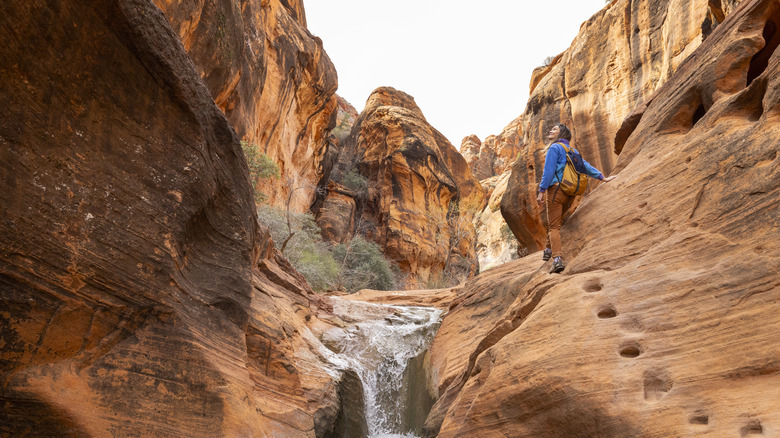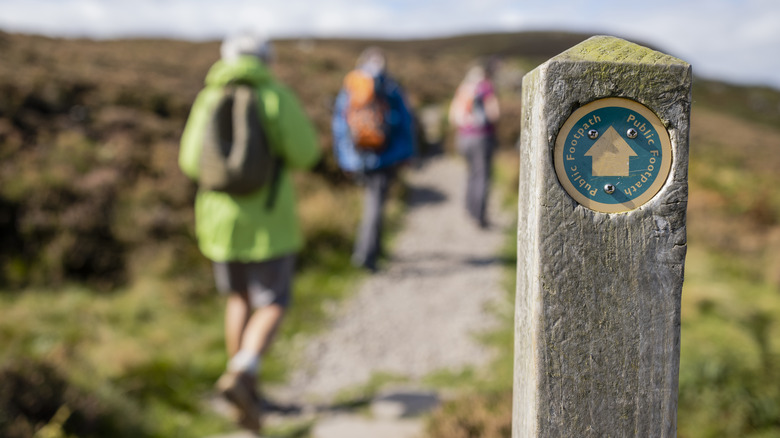Could You Really Be Prosecuted By The DOJ For Taking A Shortcut In A National Park?
Whether you're a seasoned off-trail hiker or a casual nature tourist, you've likely considered taking a shortcut on a long or difficult trail. While it may seem innocent enough to veer off the path, it could land you in trouble with the National Park Service (NPS), or, in rare cases, the U.S. Department of Justice (DOJ). In a recent case, an athlete who set a speed record summiting Grand Teton in 2024 was prosecuted by the DOJ for violating federal regulations. What the man thought of as a detour went off the official path as marked by park rangers and into an area closed to foot traffic.
According to the agency, the man violated Title 36, which was enacted for "preservation of natural, cultural and archeological resources." The runner went over a switchback, or a zigzagging path down the mountain, which could potentially cause erosion in the area. While other runners have visibly cut through the same spot before, he is now facing a potential $5,000 fine or six months in prison. Although the NPS rescinded its support in this case, citing that it believes the punishment to be too severe, the Justice Department is still pursuing prosecution.
Most of us are not going to attempt summiting a mountain as fast as possible. But shortcuts that are not a part of a designated trail on any path in a national park could land you in trouble, including a ban from the park or even jail time. Straying from marked trails is one of the most common mistakes first-time national park visitors make, and one to avoid because, yes, you could potentially be prosecuted.
Why you should stick to the official trail
When it comes to wilderness survival, none of us should be like Robert Frost. The path is well-traveled for a reason. Safety is often the top reason why a trail is marked a certain way. Even if not explicitly for the safety of hikers, veering off the trail can create unsafe conditions if you're unable to find your way back, or you may contribute to a less safe and healthy environment by eroding it.
Over 1,000 people go missing in national parks every year, most of whom are solo hikers. While those are people who vanish without a trace, park rangers are also tasked with finding and rescuing thousands more every year who are injured or can't find their way back out. In 2020, the NPS opened 49,306 missing persons cases. If you find yourself in an emergency, going off-trail makes it much harder for park rangers to find you. It's important to follow safety tips if you're going on your first solo hike.
Apart from concerns for hikers' safety — it is universally not recommended to go off-trail in national parks for a variety of reasons — you're on protected land and may be adversely interfering with the natural environment. The ecosystem in national parks are preserved by law for a reason, and many parks are already endangered. For the safety and well-being of you, your wallet, and these parks, it's best to stick to the marked trails.

